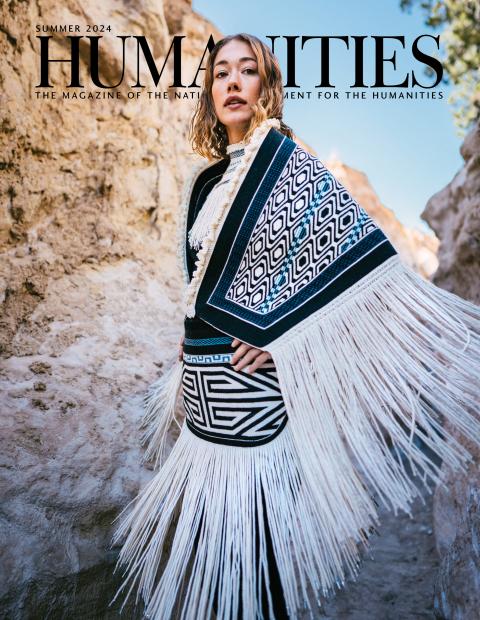In January 2023, I delivered the convocation address at the Institute of American Indian Arts in Sante Fe, New Mexico. During that visit I got to see examples of student work, including a few senior projects. As I walked through the art studio, I came upon a unique feather creation. Vibrant blue, green, and orange feathers were woven together into a form-fitting dress accentuated with long turquoise fringe. The gown was striking. Little did I know that seven months later I would see the same dress on the runway at the Southwestern Association for Indian Arts Indigenous Fashion Show. I would also meet the designer, Jontay Kahm, who is one of the contemporary artists highlighted in this issue.
This special issue of Humanities is devoted to Native American culture and history. I hope you read it and see the beauty and impact Native American, Native Hawaiian, and Alaska Native people are having in keeping their cultures alive. This issue is a wonderful example of how the work at NEH weaves together the past, present, and future, providing us all with a better understanding of Indigenous diversity in America.
Last year, I also met Nalani Thompson, who was named Choctaw Indian Princess by the Mississippi Band of Choctaw. Natalie Alexa Dreifuss introduces us to Nalani and her important role with the tribe.
Anya Montiel and Emil Her Many Horses, curators at the National Museum of the American Indian, speak about contemporary Native American artists for this issue. A prime example of the Native creativity they highlight can be seen on the cover.
Daryl Baldwin of the Miami Tribe of Oklahoma has made language revitalization his life’s work. He shows us how an endangered language can eventually flourish.
Virginia Driving Hawk Sneve is a ninety-one-year-old Lakota writer. She is the author of 27 books and counting. In Sioux Falls, I sat down with Sneve and asked her why she took up writing and what she has been up to since 2000, when she became the first Native American to receive the National Humanities Medal.
Malinda Maynor Lowery (Lumbee) is an NEH research fellow, whose work is profiled in this issue by John Perry. Matthew Sakiestewa Gilbert, a Hopi scholar of Native American history at the University of Arizona, writes about the study of Indian boarding schools and his own connections to this history. NEH scholars Camilla Townsend and Jeffrey Ostler write on the history of the Aztecs and the Indian Removal Act, respectively.
Puanani Fernandez-Akamine introduces us to a unique program of National History Day in Hawai‘i. Kimberly Suina Melwani, a Cochiti Pueblo writer, looks at a 1911 newspaper profile of Jim Thorpe and describes how he was viewed at the time.
Lastly, NEH’s own Jason Packineau, who was a major help with this issue, writes about being NEH’s first ever strategic advisor for Native and Indigenous affairs.

